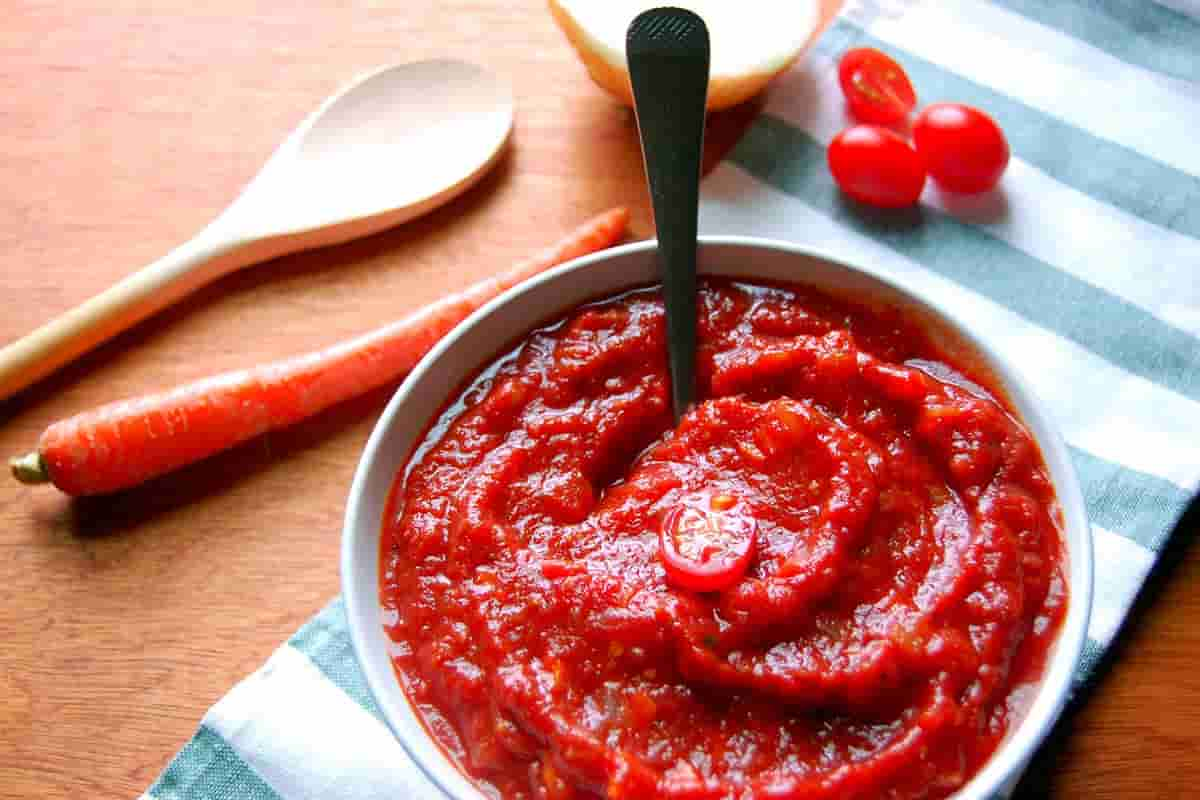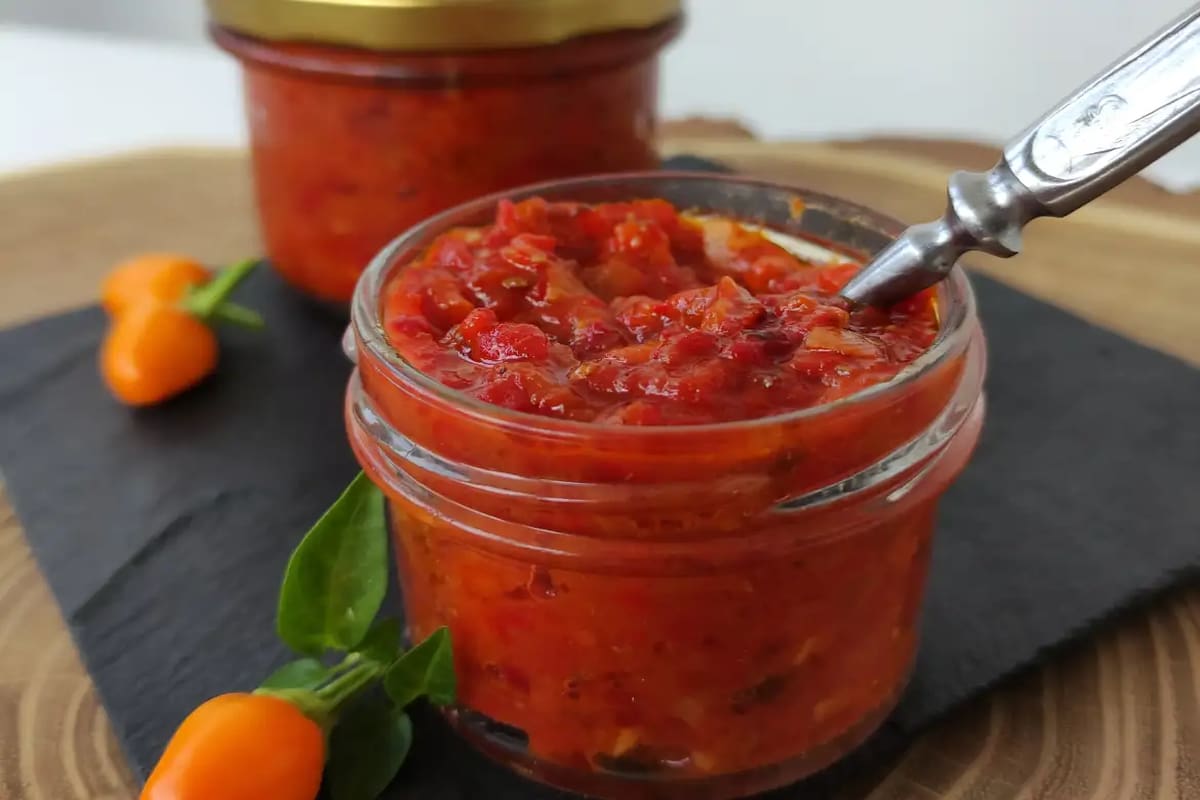Umami is what created first by the Japanese in 2002 as the fifth core taste which means deliciousness. Tomato paste which is loved by everyone and is commonly used among many nations as the main condiment is regarded to have this umami taste.
Many different garnishes and toppings can give a dish that extra something special. We’ll add some fresh lemon juice and some crushed red pepper flakes. The true potential of a dish’s flavor, though, should not be ignored until the very end. True depth can only be attained by going back to the very beginning.
Tomato paste could be a cornerstone in laying that framework. In a concentrated and handy form, this pantry staple boasts many of tomatoes’ finest qualities, including their sweet and savory flavors and acidity.
Cento, a popular brand found in most grocery stores, explains how tomato paste is made: “After sorting, the tomatoes are mashed into a mash.” The heated mash is run through a food mill to make a brilliant crimson, looser paste with a more robust, fresh flavor.
Spinning the mixture at high speeds extracts the pulp and seeds. When this is done, the paste goes into evaporation tanks to have the water evaporated.
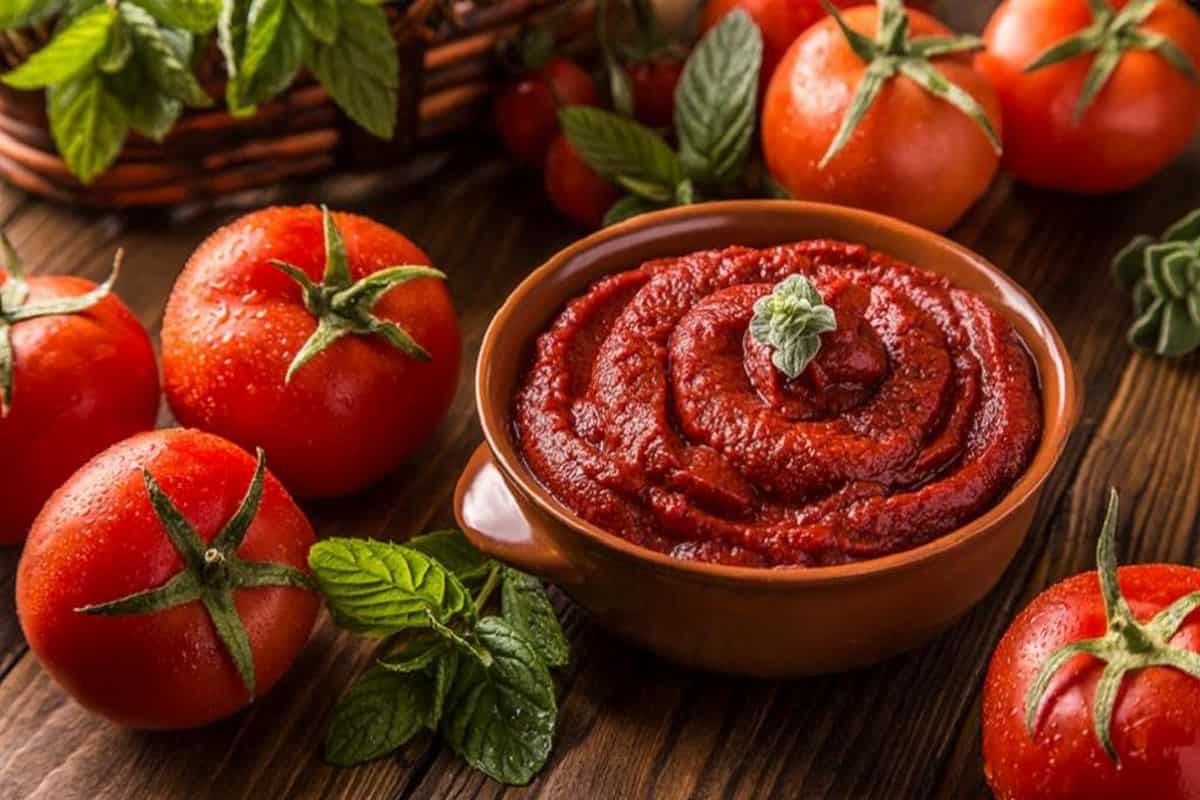
The term “double-concentrated” may or may not appear on the package, depending on the product you purchase. The main difference, according to America’s Test Kitchen, is between American and Italian manufacturers. The evaporation process is extended over a lower temperature by Italian manufacturers, leading to the “double-concentrated” label.
American-made paste is typically darker, thicker, and more cooked tasting than its brighter, looser Italian counterpart because of the greater temperature used by American manufacturers for a shorter amount of time. According to ATK, there isn’t much of a taste difference between the two varieties, so you may use either one in your favorite recipes with confidence.
The packaging of Italian brands differs greatly from that of American ones. The American brands are typically found in cans, while the Italian ones are more commonly seen in tubes. The tubes are more convenient because they keep for up to 45 days once opened in the fridge. However, the cost per ounce is higher than that of canned goods.
If you do decide to buy a can, remember to throw away any paste that remains inside. It will keep for a few days in the fridge if stored in an airtight container, but because to its perishable nature and the large quantity, it is recommended that any extras be frozen. If there is any leftover, I like to divide it into 1-tablespoon servings, freeze them on a baking sheet lined with parchment paper or silicone baking mats, and then move them to a storage bag or container. There is little need to defrost. On the counter or in the dish of your choice, it will defrost rapidly.
And there are many things you’ll want to incorporate it into. Tomatoes share the same glutamate-rich profile as anchovies, mushrooms, and kombu. Umami, also known as the “fifth taste,” is predominantly produced by the glutamate chemical family and is responsible for a food’s savory depth.
You can still get the health advantages from dishes that contain tomatoes even if you can’t taste them. Our favorite cookbook of 2020 is Nik Sharma’s “The Flavor Equation,” where he notes, “a few tablespoons can substantially increase the umami flavor, with the added bonus of not adding more liquid.”
Tomato paste is an excellent complement to any tomato sauce because it contains no filler liquid. If you want to further develop the taste, brown it in the skillet after the onions and add quick-cooking aromatics like garlic and red pepper flakes.
Tomato paste is a pantry staple in my house, and I love to add it to vegetable broth. Just a spoonful will give your dish the kind of depth you’d expect from meat. To compensate for the reduced cooking time and ingredient list, I find it to be particularly useful in an Instant Pot broth. The same goes for beans. It also works well in braises and stews. One-pan meals that need minimal cooking time benefit greatly from the use of tomato paste.
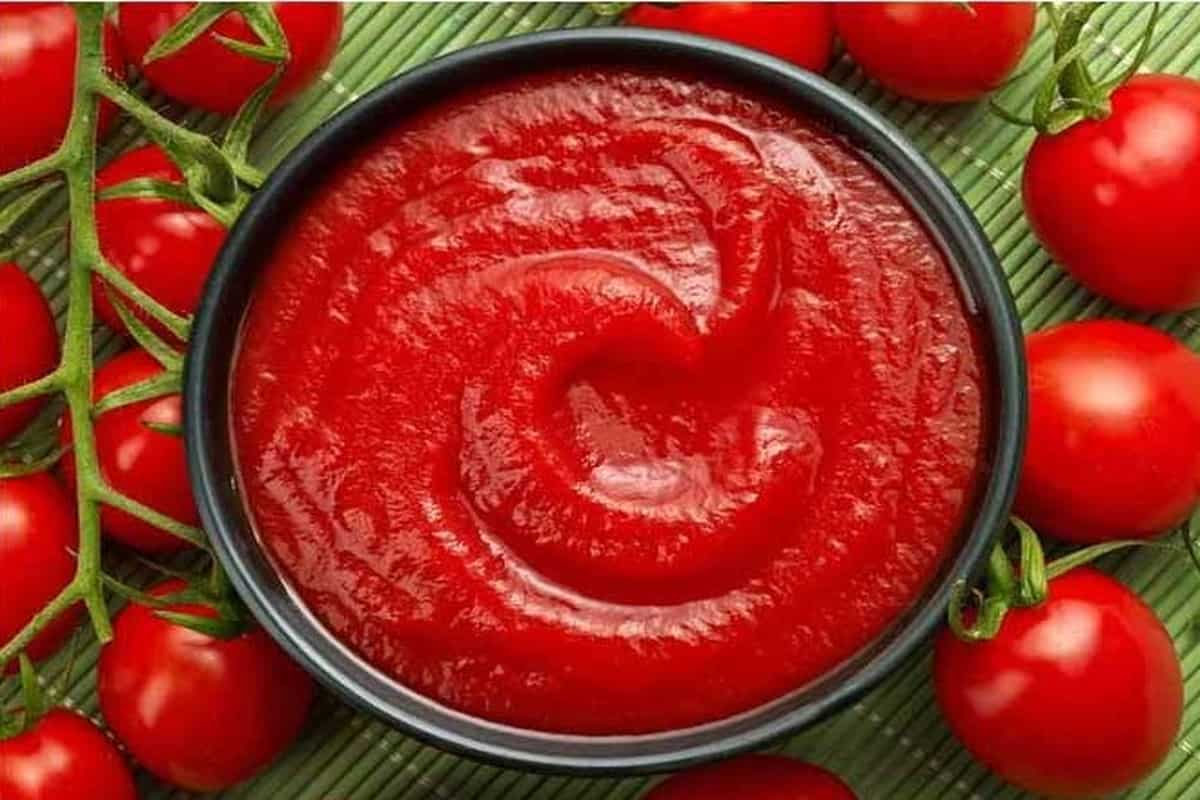
It goes well with both subtle and assertive flavors. To mild proteins like chicken, it adds aggressive power, and it pairs well with beef as well. Umami is also provided by a class of compounds found in beef called inosinates, making this pair of substances very potent.
Put a little in your mayonnaise, even if it’s just plain old Hellmann’s or Duke’s, and watch the color and flavor pop! For “a great color, richness, and depth of flavor,” as described by chef Andrew Carmellini in “The Flavor Bible” by Karen Page and Andrew Dornenburg, the chef recommends adding a very concentrated paste to an aioli made with garlic.
Add tomato paste to batters for a surprising twist. To finish that bottle of toothpaste or container of soup might not be so scary after all.
Make your own pizza and pasta sauce from scratch with this easy-to-follow recipe. The secret to this recipe’s success is the inclusion of just a few ingredients, which enhance the tomatoes’ innate qualities.
Recipe for Homemade Marinara Sauce
Too many tomato sauce recipes either urge you to cook everything for twelve hours or use as few ingredients as possible, leading to a dish that tastes like a can of tomatoes was thrown on it.
Adding umami-rich anchovy paste and Worcestershire sauce to the mix gives our sauce a richer flavor and helps the other components stand out. They provide depth to the sauce and make it seem like it was simmered all day. Read “Everything You Need to Know About Umami” if you’re interested in learning how to better utilize umami flavors in your kitchen.
There isn’t a lot of sugar in this recipe. The vast majority of tomato sauce recipes we looked at as inspiration for this one called for excessive amounts of sugar. This made no sense to us unless the cook was attempting to mimic store-bought sauce or was hoping to acquire a few new cavities.
This sauce just needs 30 minutes in the oven, so you can whip it up while you’re working on the rest of dinner. It’s not hard to make a double batch and stick it in the freezer for later use.
This sauce goes great on homemade pizza baked on cast iron, whether on the grill or in the oven. Pasta meals taste even better with the sauce added.
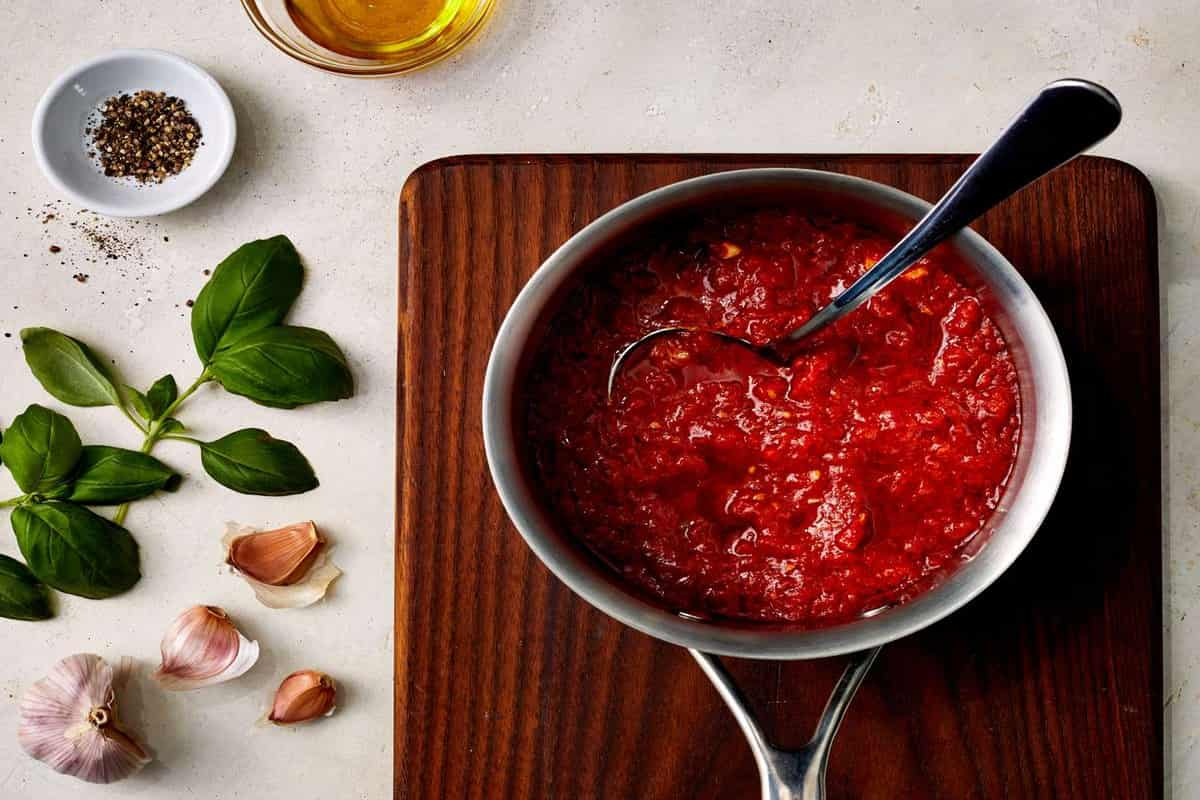
INGREDIENTS
Tomatoes, 28 ounces, diced or crushed
Recipe: 1/2 cup chopped white onion
The recipe calls for 2 minced garlic cloves.
Ingredients: 1 tablespoon of olive oil 1 tablespoon of concentrated tomato paste 1 teaspoon of anchovy paste 1 tablespoon of Worcestershire sauce 1 tablespoon of dried oregano 1/2 teaspoon of fennel seeds 1/4 teaspoon of red pepper flakes 1 tablespoon of salt 1 tablespoon of pepper 1/4 cup of minced fresh basil
Instructions
Add the onion and garlic to the olive oil and cook for a few minutes over medium heat.
Stir in the anchovy paste, tomato paste, and Worcestershire sauce. Keep cooking and stirring for a few more minutes to prevent burning.
Include the tomato juice, fennel seeds, red pepper flakes, salt, pepper, and oregano. Bring to a boil, then reduce to a simmer and add the basil.
Let the flavors meld during a 30-minute cooking period with occasional stirring.
You can use either chopped or crushed tomatoes in this dish. The sauce made from diced tomatoes is thicker and chunkier than the sauce made from crushed tomatoes, which is more fluid.



